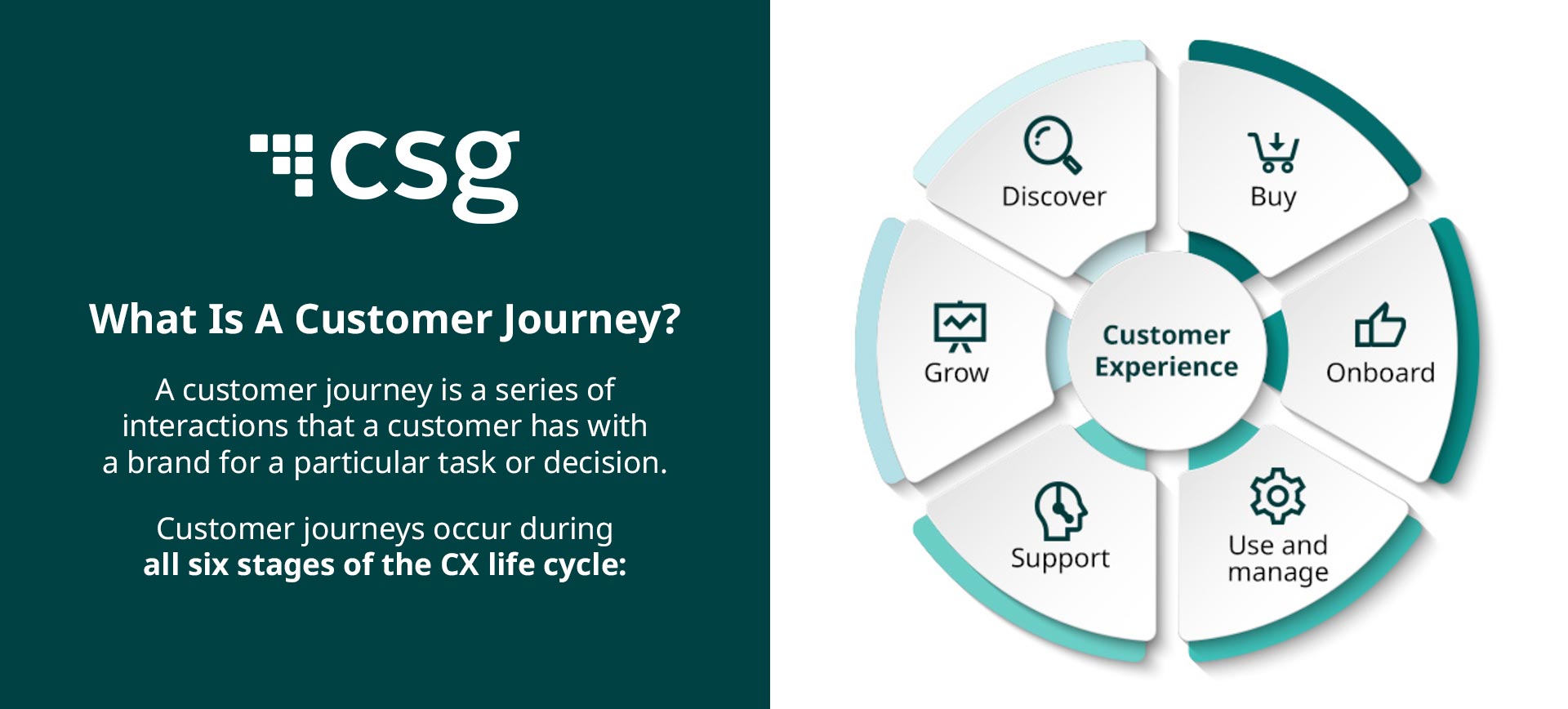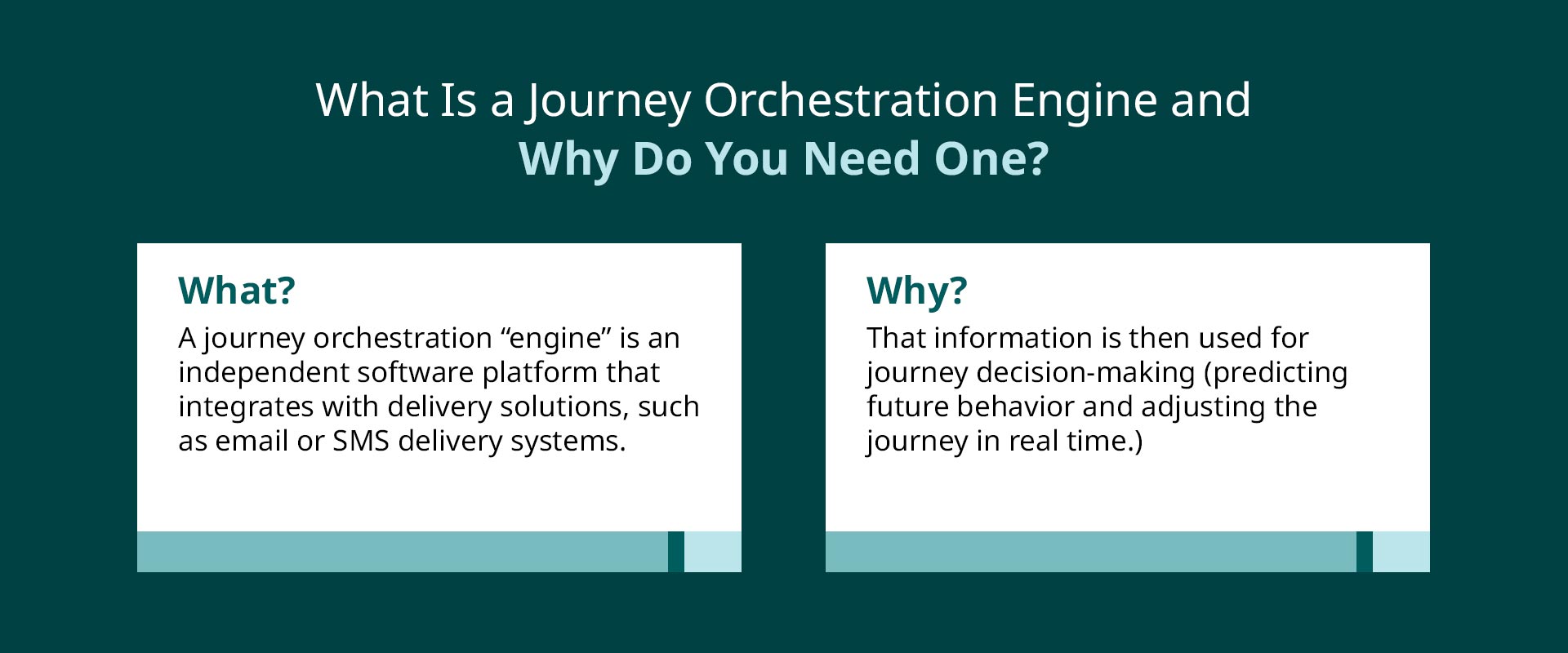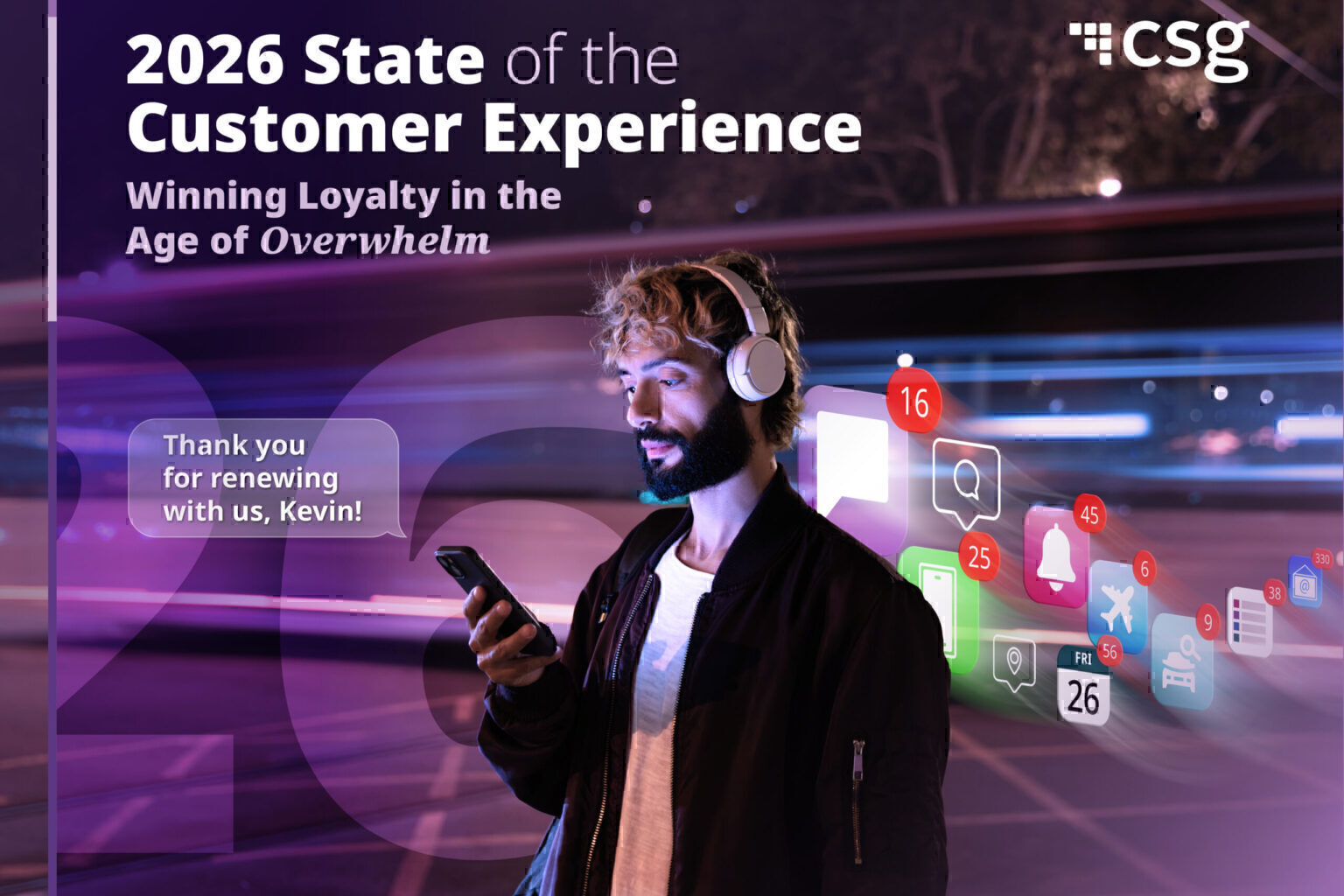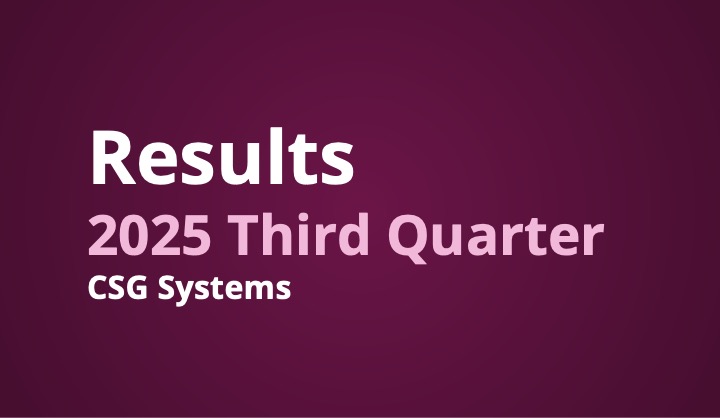Communication service providers (CSPs) are focusing on the telecom customer journey—for good reasons. Telecom lags behind other industries in customer satisfaction, with both internet service and subscription TV service at the bottom of the rankings by industry.
Customer experience (CX) is essential to prevent customer churn—which is particularly high in telecom. CSPs have traditionally had competing priorities like monetization, often hindering investment into customer experience. But now, spurred by greater customer expectations and competition, CSPs are prioritizing CX, which means paying more attention to digital customer journeys in telecom. Customer journey mapping is critical for CX improvement.
Common Challenges in the Telecommunications Industry
Competition is intense. With the commoditization of B2C offerings, and the growth of mobile virtual network operators (MVNOs), consumers have more choice than ever. 5G networks provide excellent coverage and speed in all markets, making it harder for telco operators to stand out from competitors. CX has become the primary competitive differentiator.
Competition drives the need for deeper engagement with customers. Customers expect interactions with their wireless, internet or cable provider to be quick, easy and convenient. Telecom or cable operators that cannot meet consumer expectations remain at a competitive disadvantage.
Poor understanding of customer needs and expectations. Telecom providers have vast amounts of customer data, such as:
-
- Customer usage data
-
- Interactions with the company
-
- Billing details
However, many CSPs don’t analyze this data to gain insight into customer behavior, preferences and expectations. Without this knowledge, they’ll struggle to meet customer expectations and needs.
Limited digital self-service options. According to a Statista survey, 70% of U.S. consumers expect a customer service response the same day. Digital self-service is an effective strategy to provide information quickly. Yet mobile network operators lag behind other industries in digital transformation. By mapping telecom customer journeys, CSPs can take steps to overcome these challenges.
What Is a Customer Journey?

A customer journey is a series of interactions that a customer has with a brand for any particular task or decision. Though the customer decides what actions to take at each step in the process, businesses can guide those actions toward the desired outcome. Customer journeys occur during all six stages of the CX lifecycle:
-
- Discover
-
- Buy
-
- Onboard
-
- Use and manage
-
- Support
-
- Grow
What Is Customer Journey Mapping?
Customer journey mapping means creating a visual representation of every step a prospect or customer takes when interacting with your business to accomplish a specific task. Here’s an example of a customer journey for trying to pay a bill:
- Customer tries to log in to the payment portal.
- They reset the password when they can’t remember it.
- They view the bill online.
- They call customer service to ask why this month’s bill is higher than usual.
- They finally pay the bill.
Outlining the journey steps helps you understand what customers may experience and what they want and need. A telecom customer journey map reveals customer pain points that need to be addressed. For example, if you uncover an influx of customers calling with questions about their bill, you may decide to implement a self-service digital bill explanation tool to reduce bill confusion and costly contact center calls.
Like a road map helps travelers reach their destination, telecommunications customer journey mapping helps telcos achieve their goals, including:
-
- Meeting customer expectations
-
- Improving customer engagement
-
- Boosting loyalty and customer lifetime value
What Is Telecom Customer Journey Orchestration?

To improve communication and customer satisfaction, telecom businesses need a system that delivers coordinated, personalized messages when customers need them. That’s where customer journey orchestration comes in.
Customer journey orchestration uncovers the context of customer interactions and makes real-time decisions about the next best action, guiding customers toward their desired outcome through personalized communications.
Customer Journey Mapping vs. Orchestration
Customer journey mapping means creating a visual representation of every action a hypothetical prospect or customer (i.e., a persona) takes when interacting with your business to accomplish a specific task. For example, to resolve a problem with their router, the customer may visit the troubleshooting page on your website, engage with a chatbot and then call customer service to schedule a service appointment.
Outlining the journey steps helps you understand what customers may experience on a particular journey and what they want and need. A telecom customer journey map, combined with customer data analytics at each touchpoint, reveals common friction points and bottlenecks that need to be addressed.
If the chatbot conversation isn’t helpful and doesn’t guide customers to schedule the service appointment using a self-service channel (website or mobile app), the customer will call the contact center. Using this insight, you can take steps to improve the chatbot experience.
Customer journey orchestration means coordinating a real customer’s experiences across the various channels to meet that customer’s needs, including:
-
- Website
-
- Chatbot
-
- Phone
-
- SMS
A customer journey orchestration engine delivers the right messages at the right time to help the customer accomplish the desired task (e.g., fix the router) quickly and efficiently.
What Is a Journey Orchestration Engine and Why Do You Need One?
A journey orchestration “engine” is an independent software platform that integrates with delivery solutions, such as email or SMS delivery systems.
A journey orchestration engine uses a variety of technological tools (including journey analytics) to access real-time, individual consumer data, enabling journey discovery (the evaluation of each customer’s unique attitudes and behaviors as they interact with your brand).
That information is then used for journey decision-making (predicting future behavior and adjusting the journey in real time).
Telecom businesses use journey orchestration engines to deliver customer-centric experiences. Each omnichannel telecom customer journey is tailored to simplify interactions and quickly meet needs, prevent negative experiences, address issues promptly and foster brand loyalty through real-time engagement and guidance.
To solve the customer’s router problem, the journey orchestration engine:
- Detects that a customer is viewing the troubleshooting web page
- Nudges the customer to schedule a service appointment using digital channels
- Routes the customer to the appropriate agent
- Confirms the scheduled appointment and provides instructions
- Reminds the customer of the appointment date and time slot
- Notifies the customer of technician delays
- Allows the customer to reschedule if necessary
The Benefits of Customer Journey Mapping and Orchestration
Great customer experiences are easy, effective and evoke positive emotions. Telecom companies should use customer journey mapping and orchestration to improve interactions at every stage of the CX lifecycle.
1. Better Understand and Empathize With Customers
When you put yourself in your customers’ shoes and know how they interact with your brand, you can anticipate communication gaps, friction points and where they will drop off. This knowledge guides improvement efforts to better meet consumer expectations.
For example, preemptively notifying customers of planned maintenance that may impact their wireless service prevents the stress and frustration the customer would feel if they discovered the network outage five minutes before a client call.
2. Identify Unmet Needs
Having a comprehensive grasp of customer needs across various interactions helps you spot gaps in the journey, eliminating the need for guesswork.
With this knowledge, you can introduce additional touchpoints or enhance existing ones. For example, contacting customers before their contract expires and offering them a tailored plan or bundle based on their usage history could prevent them from spending hours researching your competitors’ offerings.
3. Pinpoint Blockers
By mapping how customers navigate your website or app, you can anticipate places where customers try to engage but can’t, or where it takes too much effort to complete an action. For example, if customers can’t remember their password for the payment portal, you can use a digital bill explainer tool that links to the payment portal, without requiring login.
4. Deliver a Personalized Experience
Journey orchestration provides a layer above the communication channels, themselves, to organize customer conversations on a personalized level. A customer profile provides real-time information about the customer’s needs based on data usage history and communication channel preferences.
This information enables CSPs to engage customers at the right place and at the right time. For instance, the decision system can send an offer for an upgraded data plan through the customer’s preferred channel, such as text message, before the customer exceeds the data allowance and incurs overage fees.
5. Avoid Sending the Wrong Messages
Customer journey orchestration acts like an air traffic controller, coordinating communications so they don’t collide with each other. For example, the system suppresses conflicting communications during a support journey. Someone who is currently complaining about a service outage or unexpectedly high bill isn’t likely to respond favorably to an email about renewing their contract.
6. Enhance Customer Satisfaction and Loyalty
Customer journey orchestration eliminates some of the top churn drivers for telecom customers:
-
- Broken omnichannel flows: Customer journey orchestration powers intent-based call routing that directs callers to the correct agent, reducing transfers between departments and the need to repeat themselves.
-
- Poor agent service: Customer journey orchestration helps deliver proactive guidance for contact center agents, providing the information they need to assist customers quickly and accurately so the customer doesn’t need to call again.
-
- Wasting customer time: Notifying customers that a technician is delayed gives customers the opportunity to reschedule the service appointment and avoids wasting their time.
4 Steps to Create a Customer Journey Map
Creating a customer journey map can help you visualize the customer’s experience with your business. Follow these steps to learn how to motivate their progress.

1. Establish Clear Objectives
Decide what you want to accomplish. Where is your company’s CX falling short? If customers are dissatisfied with your contact center because their problems are not getting resolved in one call, one objective would be to increase first-call resolution by implementing a telco-specific agent desktop solution.
2. Create Customer Personas
Describe hypothetical customers who represent the demographics, psychographics and behavioral characteristics of your average customer, such as:
- Age
- Income
- Occupation
- Personality
- Lifestyle
- Attitudes
- Usage patterns
- Preferences for services
- Loyalty
Keep these personas in mind as you map telecom customer journeys. What emotions and friction points are these personas likely to experience as they interact with your brand? What can you do to make their interactions more convenient and forgettable—in a good way?
3. Identify Consumer Touchpoints
Telecom customers engage with your organization through various touchpoints such as online searches, email campaigns, social media and mobile app interactions, in-store visits, phone calls and chatbot conversations. After identifying these touchpoints, consider their impact on customers.
Whom do they contact for assistance? How easily can they schedule a service appointment? Is it straightforward for them to pay their bills? The answers to these questions should guide your CX improvement efforts.
4. Outline Key Customer Journey Steps
Identify the sequence of actions that customers take during a particular journey. For example, someone who is approaching the end of their internet contract may research plans from your brand and your competitors. To do that, they may visit websites, browse social media and read online reviews. If they choose a competitor’s plan, they cancel their account.
Customer journey analytics tracks customers’ interactions with your brand, helping you understand what is happening and predict intent. Recognizing that customers are comparing plans allows you to proactively contact them (using customer journey management software) and offer them a tailored plan based on their usage history.
Key Requirements for Customer Journey Orchestration
Effective customer journey orchestration requires tailoring each interaction to your customer’s unique needs and optimizing based on their feedback. Here’s what you need to know to coordinate a customer’s experience in real time and enhance their individual experiences.
Customer Journey Maps
Customer journey maps identify the sequence of actions customers take during a particular journey. For example, to pay a bill a customer may attempt to log in to the payment portal, reset their password when they can’t remember it, view their statement, call customer service to ask why this month’s wireless bill is higher, and finally pay their bill. Mapping the bill payment journey reveals potential friction points that make it more difficult for customers to pay on time and avoid late fees.
Customer Data Platform
A customer data platform (CDP) collects, integrates and manages customer data from various sources, including:
-
- Customer relationship management (CRM)
-
- Contact center systems
-
- Billing
-
- Browsing history
CDPs consolidate this customer data to produce a unified profile for every customer that updates in real time and is accessible across systems and departments.
Customer Journey Analytics
Customer journey analytics tracks customer interactions with your brand across every channel and department. Journey analytics combines channel analytics with customer intent to help you understand:
-
- Customer behavior, preferences, needs and expectations
-
- Where the journey got derailed (e.g., pain points)
-
- How to improve customer journeys
Journey Orchestration Engine
Look for a journey orchestration platform that:
-
- Connects data from your current systems
-
- Makes decisions in real time regarding the best communications to send
-
- Decides what messages to send and not to send
-
- Prevents sending too many—or the wrong—messages
-
- Pauses the marketing campaign when customers are engaged in service/support journeys
-
- Uses journey analytics to analyze channel performance, identify pain points and track customer behaviors and patterns across channels
-
- Tracks and listens to prospects and customers as they transition from unknown to known
-
- Manages customers as an evolving, holistic profile
Simplify Telecom Customer Journey Mapping and Orchestration With CSG Xponent
Telecommunications customer journey mapping helps you understand and meet customer needs and expectations, eliminate pain points and improve customer journeys.
Xponent makes it easy to get started with customer journey management and achieve quick wins. Xponent combines a customer data platform with journey analytics and journey orchestration to deliver personalized communications that guide customers to the next best action to accomplish their tasks.
At CSG, we’ll help you build a business case, identify high-value journeys and launch your customer journeys. Connect with one of our experts today to start orchestrating telecom customer journeys.
Simplify Telecom Customer Journey Mapping and Orchestration with CSG Xponent
CSG Xponent makes it easy to get started with customer journey management and achieve quick wins.











